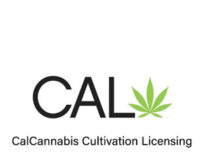One year after Canadian recreational cannabis’s historic date of October 17th, 2018, in comes Cannabis 2.0, which will see edibles containing cannabis and cannabis concentrates enter the legal recreational market. As of October 17th, 2019, there are seven classes of legal cannabis products in the marketplace, making Canada an innovative leader in this evolving industry.
The launch of cannabis edibles and concentrates into the legal market has also led to changes in the regulatory framework and the introduction of new best practices in terms of Good Production Practices (GPP). This should not come as a surprise, as these products are introducing the inclusion of cannabis and food products.
 Since Oct 17th, 2019, we have seen a significant amendment to the Cannabis Regulations through the addition of sections 88.93 and 88.94, stating that holders of a license to process cannabis edibles or extracts must identify and analyze all potential hazards and have control measures in place to prevent, eliminate or reduce these hazards from occurring. Any license holder that conducts activities related to cannabis edibles, extracts or produces an ingredient used in an edible or extract must also prepare, retain, maintain and implement a preventive control plan (PCP). To indicate that cannabis edibles and extracts regulations resemble other regulated food commodities, would not be an understatement.
Since Oct 17th, 2019, we have seen a significant amendment to the Cannabis Regulations through the addition of sections 88.93 and 88.94, stating that holders of a license to process cannabis edibles or extracts must identify and analyze all potential hazards and have control measures in place to prevent, eliminate or reduce these hazards from occurring. Any license holder that conducts activities related to cannabis edibles, extracts or produces an ingredient used in an edible or extract must also prepare, retain, maintain and implement a preventive control plan (PCP). To indicate that cannabis edibles and extracts regulations resemble other regulated food commodities, would not be an understatement.
By having license holders establish food safety practices similar to the ones being used by federally regulated food commodities, it is allowing cannabis producers to implement a preventive approach by focusing on safety and reducing hazards in their operation.
According to the Cannabis Regulations a license holder’s PCP must include the following:
- Identify all of the biological, chemical and physical hazards that could contaminate or could be at risk of contaminating any cannabis product or anything that could be used as an ingredient in producing a cannabis product. Once all of the hazards have been identified, you need to determine the likelihood of that hazard occurring
- The measures to be taken to control each identified hazard. Each control measure must then describe the task involved, how the monitoring task is carried out, who will be performing the monitoring task and how often the monitoring task is carried out
- A description of the critical control points, which are the steps in the process where a control measure is applied and is essential to eliminating a hazard. Next are the measures to be taken to monitor a critical control point
- A description of each cannabis product produced or ingredient that will be used in a cannabis product, including extract contents, permitted & prohibited ingredients, exceptions, naturally occurring substances and uniform distribution
- A description of corrective action procedures for every critical control point
- A description of verification procedures
What else comes with the collaboration of these two commodities in a regulatory environment? The need for industry to adapt and move beyond the basic GPP and pharmaceutical requirements and start thinking in terms of preventative controls and food safety. By encompassing the GPP requirements, traceability, employee training and now a complete hazard analysis and preventive control plan, you have the makings of a full food safety plan. However, food safety plans can be comprehensive and difficult to manage by utilizing a manual system.
 Companies that are serious about the integration of cannabis edibles and extracts into their operations, will need to implement compliance and traceability technology that will facilitate an automated system. In return, you will streamline all monitoring processes throughout the production, packaging and storage stages of the system. This is crucial to a preventive control plan. An automated solution will also help with record keeping, document management and corrective actions, as license holders deal with failures in real time to avoid negative impacts on their products.
Companies that are serious about the integration of cannabis edibles and extracts into their operations, will need to implement compliance and traceability technology that will facilitate an automated system. In return, you will streamline all monitoring processes throughout the production, packaging and storage stages of the system. This is crucial to a preventive control plan. An automated solution will also help with record keeping, document management and corrective actions, as license holders deal with failures in real time to avoid negative impacts on their products.
There are many compliance software platforms available in the industry and choosing the right one for your operation is a task in itself, as not all software platforms for the cannabis industry are created equally. Although many seed-to-sale platforms handle regulatory requirements and some document management, these platforms do not see cannabis as food products, and therefore, are leaving companies with a void in this aspect of their operation. When looking for a software platform that will encompass all of your regulatory needs, pay particular attention to systems that are designed for the food industry but have adapted to cannabis. These systems will be the most dynamic when it comes to implementing preventive control plans, handling in-depth traceability with recall plans and the ability to become completely digital.
For more information on how to automate your food safety plan for cannabis edibles and extracts, please contact Iron Apple QMS to learn about our online Cannabis QMS.







































